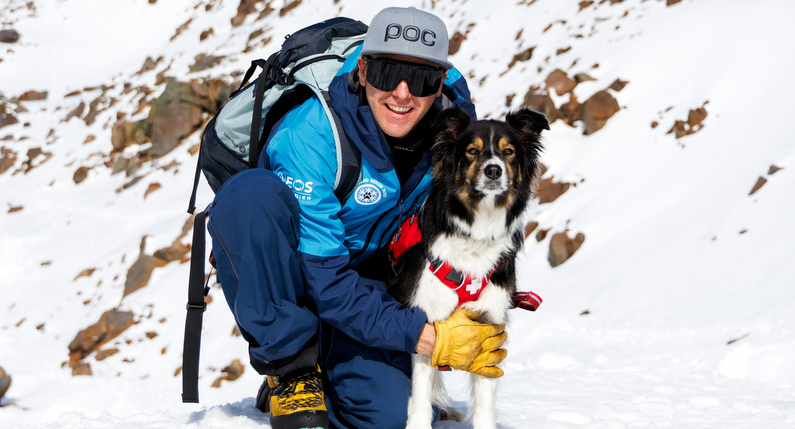
SAR by scent
Collaborations with local and international experts vital to the high standards of New Zealand Avalanche Dog Rescue capability.
An avalanche transceiver is a small personal device that allows your companions to locate you quickly if you were buried in an avalanche. But without a properly functioning transceiver and the training to use it, one of your best chances of survival is the rapid deployment of an Operational Avalanche Rescue Dog team, to sniff out your burial location amongst the debris.
Search and Rescue Dogs Avalanche (SARDA) New Zealand is the volunteer organisation which provides the operational teams based at most major ski areas across New Zealand.
“For a relatively small capability, the standards of our teams are surprisingly high when measured against our peers worldwide,” says Karyn Robertson, SARDA National Coordinator. “A lot of the credit for our high standards goes to our strong relationship with the NZ Police Dog Training Section.” The SARDA volunteers have access to cutting edge Police training resources, and highly experienced Police trainers are fully involved in the avalanche dog training and assessment pathway.
SARDA is fostering international relationships and keeping up with best international practice and advanced research. One promising study, involving highly experienced french avalanche dog handler Fabrice Huot, models how the scent of a buried person travels through avalanche debris. “Interestingly, the research evidence shows that scent only travels vertically upwards through the snow, unless there’s a horizontal air pathway between debris blocks,” says Andy Hoyle, SARDA operational handler and volunteer committee member. “This challenges some of the traditional thinking here, and could help refine our response algorithms.”
Timeliness is crucial to achieving a live recovery with an organised avalanche response. Applying the right resources, in the right order to the right places means everything for a successful outcome. “A small improvement in our algorithm could be the difference between life and death” says Andy. SARDA has invited Fabrice out to New Zealand, to participate in a training camp and to conduct a similar study here. “We have a maritime snowpack, which is generally wetter and denser than a continental European pack. Evidence from a New Zealand study could refine the size of our [avalanche] probe pattern when the dog indicates a scent. The right size means we don’t waste precious minutes in areas of little to no probability.”
Avalanche burial incidents are less common in New Zealand than in the much busier northern hemisphere mountains. According to ‘Avalanche Incidents in New Zealand from 1998-2023’ published by the Mountain Safety Council, there’s a yearly average of 31 reported incidents and just over 1 fatality. “Fabrice personally attended multiple fatal burials in the Alps last season,” says Andy. “So there’s a whole other level of expertise that we want to learn from.”
As well as being a SARDA volunteer, Andy works as the General Manager - Quality at Whakapapa Ski Area. Although the SARDA members volunteer a massive amount of time to train and care for a dog, most are snow industry professionals based at the ski areas. “It has been great to see that SARDA and the voluntary aspects of the dog capability are getting better and better support from most ski areas. This reinforces that good relationships and collaboration are fundamental to an effective capability.”
Looking across the wider SAR sector, Andy is delighted that SARDA has been invited to collaborate with MountainSafety. info, an international hub of industry-leading research and best practice guidelines for avalanche safety and response. “Coming together with the undisputed international experts means that we all are following the same procedures with a common language. After all, we don’t respond alone, it’s always a multi-agency effort, with Police, local helicopter operators, plus Land Search and Rescue Alpine Cliff Rescue volunteers. SARDA is 100% committed to working constructively and collegially for the best outcomes for avalanche response.”
Top image: Andy Hoyle with Echo. Courtesy Jane Dunn Photography
Enjoy this story?
Sign up to our Link Newsletter to receive stories like this plus NZSAR news and announcements direct to your inbox.
Follow NZSAR on LinkedIn for more SAR news, announcements and discussion.
This story was originally published in the July 2025 issue of Link magazine, which is produced by the NZSAR Secretariat for the wider search and rescue sector.
